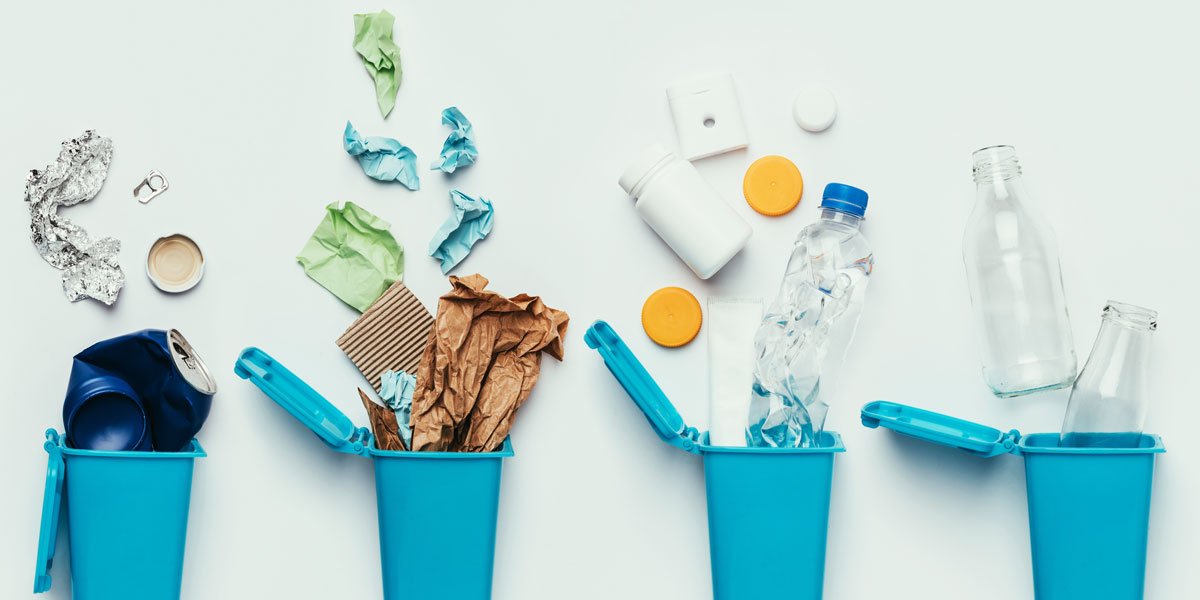Beginners Guide to Waste Audits
Your office has a trash problem and you may not even know it. Here are some problems we often see. One of these might resonate with you …
You’re wasting money by having your trash man service near empty containers
You’re needlessly buying single-use products like coffee cups for the break room when you could switch to reusables
Employees are contaminating the recycling stream and no one is paying enough attention to stop it
Or your staff perfectly separates recyclables & compostables, but the cleaning crew puts them in the wrong containers or is bagging recyclables
Or maybe all of the above is happening and you just don’t know
A waste audit is your solution. But what is it?
It’s a way to analyze your company’s waste and figure out what needs to change. Sometimes those changes can save you money. Sometimes they’ll get you closer to your eco-goals. But overall, you’re gonna be surprised at what you find out. And that’s where the fun starts.
Can I do it myself, or do I need help?
There are layers to this, so we’ll give you easy-to-hard …
The Eye Test: The easiest and quickest approach is just to eye the tops of your indoor bins and outdoor dumpsters/carts. Do you see contamination? Is the right material making it into the right bin? Are recyclables being un-bagged when they go into the dumpster? You can figure that stuff out real quick with a simple eye test. You can do this on a weekly or monthly basis without much time commitment. And it’ll make a positive difference. Every organization should be doing this at least occasionally.
DIY Approach: Get a team together and lay out all the trash for the day. Several days of material is ideal. Separate it into categories and weigh it. We’ll go into detail below.
Hire someone else to do it: You can hire an organization like Nebraska Recycling Council, First Star Recycling, or if you’re a large business/institution, Verdis Group.
How to do a DIY audit
Not our favorite-looking video, but it does explain things well and gives you a visual of what to expect.
#1 Build a sustainability team
If you don’t have an inner-staff “green team,” now’s a good time to make one. And their first task can be digging through trash (lol). Find volunteers that will consistently meet to discuss goals & actions (and give yourselves a name, like "Trash Talkers" or "Sustainability Team.”) This team will oversee changes you'll want to make as a result of the audit.
#2 Pick a week for the audit
Pick a week without special events and when most of the team is in the office. Alert the custodial staff to hold off on emptying the trash this week. (Yippee!)
#3 Identify waste streams
Before the "waste audit week," identify the most common trash types produced. The list can be general for now. You can add as you go during the accurate audit.
Common waste streams:
Cardboard/paper
Containers (Plastic bottles & Aluminum cans)
Food waste & compostables
Landfill
Glass
#4 Gather tools.
Safety first! Gather supplies before the big day.
Tool Supply List:
Camera
Space for sorting trash.
Rubber gloves (per volunteer).
Face masks
Way to weigh trash (scale)
Tongs for grabbing the trash
Boxes and labels for sorting by each stream. Label the boxes by each category, like "container recycling" or "fiber recycling."
Recording device to save findings
Trash bags for re-bagging waste after an audit
#5 Dump out trash & begin to sort
Weigh each bag and record the weight. This will tell you how much you're throwing out each week.
Do a "visual inspection" to assess for contamination. Please write down the items causing contamination so you can communicate them to the team afterward.
Dump all the trash into the open area.
Sort all materials into the boxes labeled to their categories.
Once done sorting, weigh each category.
Record the amount and save it.
#6 Take a look at the data
After recording the weight, analyze the data.
Divide the total weight of each category by the combined weight of all the waste (trash + recyclables). Multiply the number by 100 to get the percentage of waste you currently divert from the landfill.
Ask yourself these questions:
What waste stream is the highest?
What department (is to blame) for the most waste?
If you recycle, did you find comingling between landfill and recyclables?
Are there any categories you didn't know you had?
Don't toss this report. It'll be a powerful marketing tool after you use it to show how hard you're working on diverting waste from the landfill.
Here’s what to do with that data …
Here’s where all the magic happens.
Can you save money by decreasing the number of times your dumpster is emptied?
Can you save money by switching from single-use items to reusables? (Keep in mind: true sustainability is all about consuming less).
Replace plastic cups with compostables or institute a BYO-cup program
Switch to online billing vs. paper, double-sided printing
Compost bathroom paper towels or switch to hand dryers
Can anything be up-cycled? Think: saving shredded paper for packing material. Or Firehouse Subs stopped tossing its pickle buckets and started selling them for charity. Or un-eaten food going to Saving Grace.
Do you wanna start recycling or composting things going to the landfill?
Whatever you decide, be sure to set a timeline goal. Task your green team or facilities folks with making the changes happen. Just be sure that someone or some group owns what happens next.
Need help with implementation?
Here's the good news: we can do it for you.
Hire us to conduct a waste audit or implement your next steps post-audit. We’ll create an action plan, train your employees, set up your program, or even talk to the architects designing your next building. (Seriously, we can save you tens of thousands of dollars by telling you the right way to make a waste enclosure). Overall, we make it easy so you can stay focused on the job that pays you.
We have a 12-step program for implementing recycling and composting programs. It summarizes all the best practices we’ve seen into a simple format.
You can check it out now. For free. Go ahead! …


